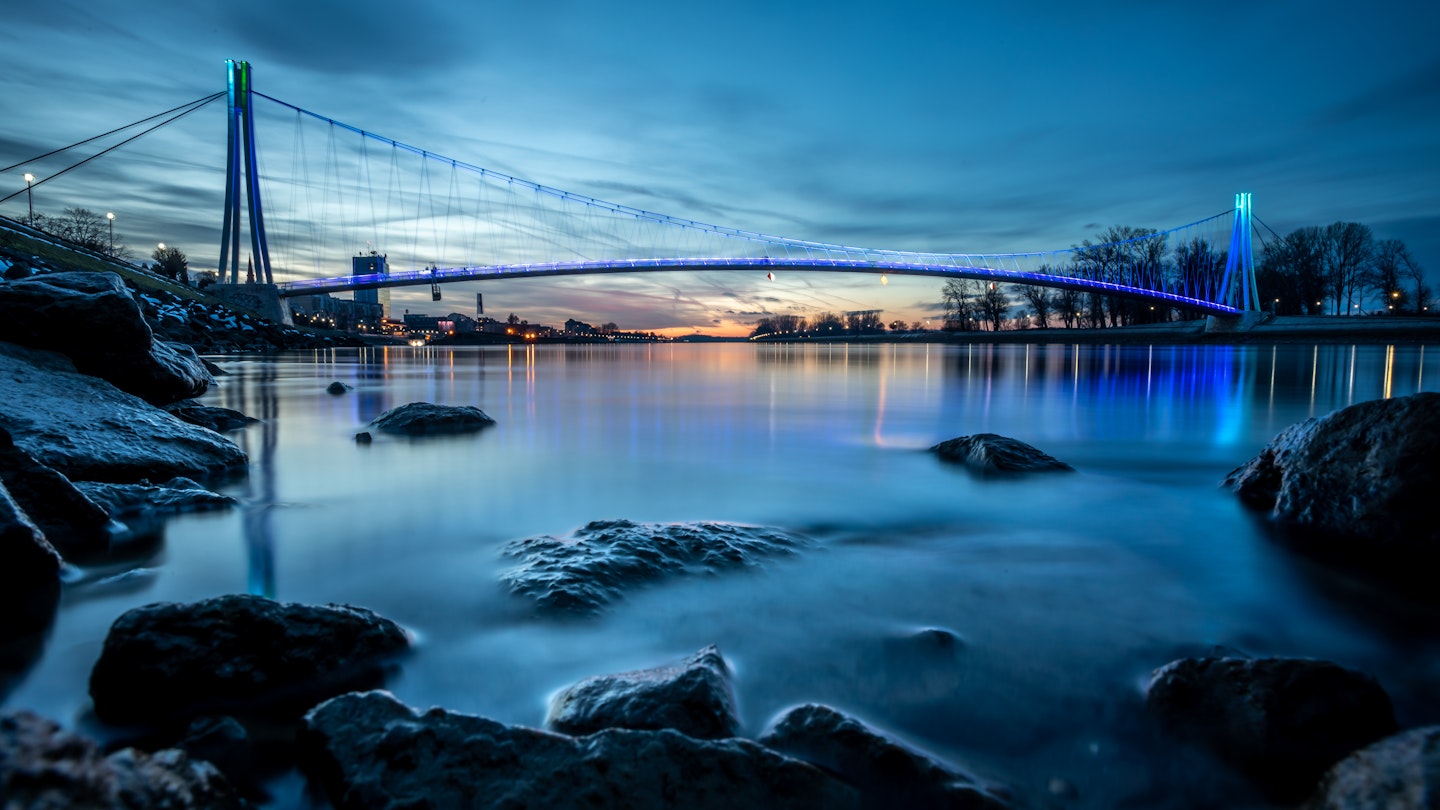Discover the Hidden Gem of Slavonia, Croatia
Tucked in the eastern part of Croatia, Slavonia is one of the country’s least explored regions. This land bordered by three great rivers, the Sava, the Drava, and the Danube, surprises with its fascinating mélange of cultural and culinary influences.
Although it may be off the usual tourist trail, Slavonia rewards visitors with spectacular natural beauty, towns full of history and beautiful architecture, and hearty regional cuisine paired with excellent wines. From food to folklore, wine to wild nature, there’s much to experience and savor here.
Osijek: The Heart of Slavonia
Osijek is Slavonia’s capital and biggest town. This handsome riverside city is full of visit-worthy highlights, such as the waterfront promenade stretching along both banks of the Drava River, complete with a pedestrian bridge joining them. A must-visit is the neo-Gothic Church of St. Peter and Paul. After admiring its majestic red-brick exterior, step inside to take in the magnificent stained-glass windows and high ceilings painted in brightly colored frescoes.
Next, head east of the city to explore the historic Tvrđa, a well-preserved 18th-century Austro-Hungarian military fortress. This compact mini-town features a few cobblestone streets linked by broad squares and lined with imposing Baroque-style buildings topped with red tile roofs. The university is located here, with many age-old edifices now housing buzzing cafes and restaurants catering to students and visitors alike. Be sure to visit the Museum of Slavonia for a deeper understanding of the region’s history.
Đakovo: The Cathedral City
Dominated by the remarkable 275-feet-tall twin spires and cupola of the massive redbrick Cathedral of St. Peter, the first thing to strike you about Đakovo is its impressive skyline. Although completed in 1882, the cathedral’s dazzling interiors have been expertly restored, showcasing intricate paintings covering its columns, arches, and ceilings.
Just a short walk from St. Peter’s, visitors can explore the State Stud Farm, where the famous Lipizzaner horses have been bred and trained since the early 18th century. Renowned for their elegance and strength, these white purebreds are closely associated with the Spanish Riding School in Vienna. Guided tours allow guests to get up close and personal with these beautiful stallions.
For a deeper experience, plan your visit during the first weekend of July for the Đakovački Vezovi. This event showcases traditional costumes and fills the streets with lively folk dances and singing, making it an unforgettable experience.
Exploring Požega
Požega boasts a charming old town characterized by neat pastel facades, cobblestone lanes lined with Baroque-style buildings, and low-sloped roofs. The city experienced a long occupation by the Turks for 150 years until 1689 and underwent significant changes during the 18th century under Austro-Hungarian influence.
To discover exceptional examples of Baroque architecture, head to the central square, which features the city hall, the 13th-century Franciscan monastery, and the Church of the Holy Spirit. Also, admire the four-story Jesuit College and the Church of St. Lawrence. A column topped with statues of the Holy Trinity serves as a memorial to the victims of the plague, reminding visitors of the town’s history.
Wine Country: Baranja Region
Heading north from Osijek, you will reach the northeastern corner of Croatia, bordered by Hungary to the north and the Danube river to the east. This region, known as Baranja, features wooden houses topped with deeply sloped roofs, and is celebrated for its delicious regional cuisine and charming ambience of country life.
Historically, this area has been wine country since Roman times, with the Danube basin’s rich black soil and loess offering unique quality to the local wines. While white grapes dominate, the region also produces fantastic red varieties including frankovka (Blaufränkisch), merlot, and cabernet sauvignon.
Karanac Ethno Village
For a culinary journey showcasing the best food and wine the region has to offer, start in Karanac Ethno Village. This picturesque community of residential farmsteads and traditional inns is surrounded by gentle slopes covered with neat rows of vineyards.
Visit Baranjska Kuća, a rustic restaurant serving local favorites cooked over open fires. Sample traditional dishes like fiš paprikaš (a spicy fish soup) or čobanac (hearty Slavonian meat stew) for an authentic taste of the region.
The Wine Roads of Baranja
Your next destination is Kneževi Vinogradi for a taste of some of the best wines at Vina Belje. With over 300 years of winemaking heritage, this vast 2.5-acre complex offers guided tours showcasing vineyards and processing units, culminating in a visit to the vast brick cellars where wine matures in oak barrels.
Another notable winery is Kolar, located in Suza, where three generations of a family have produced high-quality wines, available for tasting in their historic 100-year-old cellar.
Complete your gastronomical tour of Baranja in Zmajevac with more wine tasting or a fulfilling meal at the Josić restaurant and winery, offering dining in a charming setting under vaulted brick ceilings or outdoors in a picturesque courtyard.





